One of the most ambitious SEO campaigns ever.

DoNotPay.com has grown from 0 to 1,500,000+ organics/month in 24 months.
This isn’t vanity traffic either.
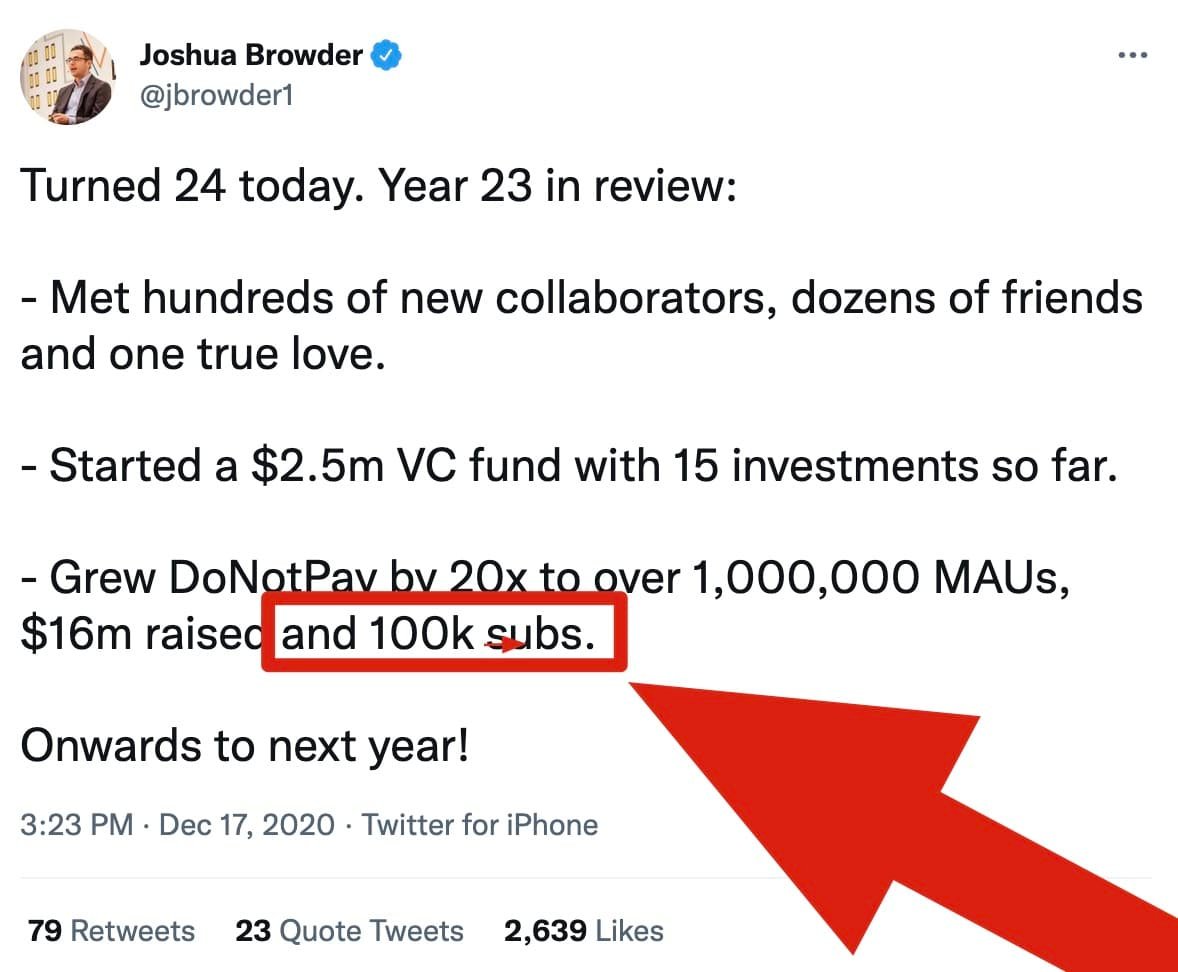
Helping drive a $210m Series B valuation.

Most likely, making this project one of the best SEO campaigns ever.
With 0 full time SEOs.
At this point I’ve said SEO three times.
But this isn’t an SEO case study.
This is a case study on creating more value for searchers than any other page Google could show at scale only seen in media conglomerates.
This case study is a 5,000 word monster.
If you’re on mobile, send it to yourself to read later.
Keep reading to learn why everything you know about SEO is a lie.
🔎 Background
If this is your first piece of ContentDistribution.com content, here’s what you gotta know.
We’ve taken 5 projects from 0 to 100,000+ organics/month without building backlinks.
Without technical BS.
Without shortcuts.
And without hacks.
We did it by creating the highest quality, most relevant page of content Google could show for the keywords we wanted to rank for and doing that over and over again.
Basically, good content at scale.
And we’ve documented exactly how we do it:
-
- 0 to 103,000 organics/month (first big win)
- 0 to 119,000 organics/month (subscription DTC)
- 0 to 166,000 organics/month (second big win)
- 0 to 1,500,000 organics/month (biggest win for A16Z startup)
- Baby fat graphs (not quite big enough for their own case study)
[optin-monster-inline slug=”pey30dtm3v7xxdtmzget”]
DoNotPay

After racking up one too many parking tickets, an 18-year-old Joshua Browder created DoNotPay to help automate the dispute process.
Since then DoNotPay has helped hundreds of thousands users dispute tens of millions of dollars in parking tickets.
And built dozens of other features to help subscribers navigate government bureaucracy and fight back against corporations.
Here is a short list of some of the things DoNotPay does.
- Filing for unemployment
- Suing anyone, or any company, in small claims court
- Canceling hard to cancel services
- Filing chargebacks
- Securing flight compensation for delayed or canceled flights
- Skipping company’s phone queues
- Scheduling DMV appointments
- Studying for government tests
- Communicating with inmates held in state and federal prisons
- Send faxes without a fax machine
In 2020 Joshua has been coined ‘The Robinhood of the Internet’ by BBC, and recognized by the American Bar Association with the Brown Award for access to justice efforts.

This Shouldn’t Be Controversial Anymore
It’s 2021.
And I am convinced that the world’s most innovative big data company isn’t using backlinks as a primary ranking signal anymore.
Along with Google Search, Google also owns
- Google Analytics
- Chrome
- Android
What other metric better measures and compares quality of content than UX metrics?
Think about it.
Two pieces of content, same topic.
One piece of content has
- 99% bounce rate
- 3 second session duration
- 1.01 pages per session
The other piece of content, on the exact same subject has
- 48% bounce rate
- 4 minutes average session duration
- 6 pages per session
Without reading either page of content, you can guess the 2nd one adds more value to the reader than the first page of content.
This is how Google works.
And these are the types of outcomes we see.
Again, and again, and again.
Over the last 3 years, when we focus on publishing the highest quality, most relevant page of content Google could show
And we do it at scale.
We rank well.
That’s literally it.
0 to 47,000 organics/month in 13 months for AnyLeads.com

445 to 103,000 organics/month in 13 months for LogicInbound.com

0 to 116,000 organics/month in 13 months for Doggypedia.org
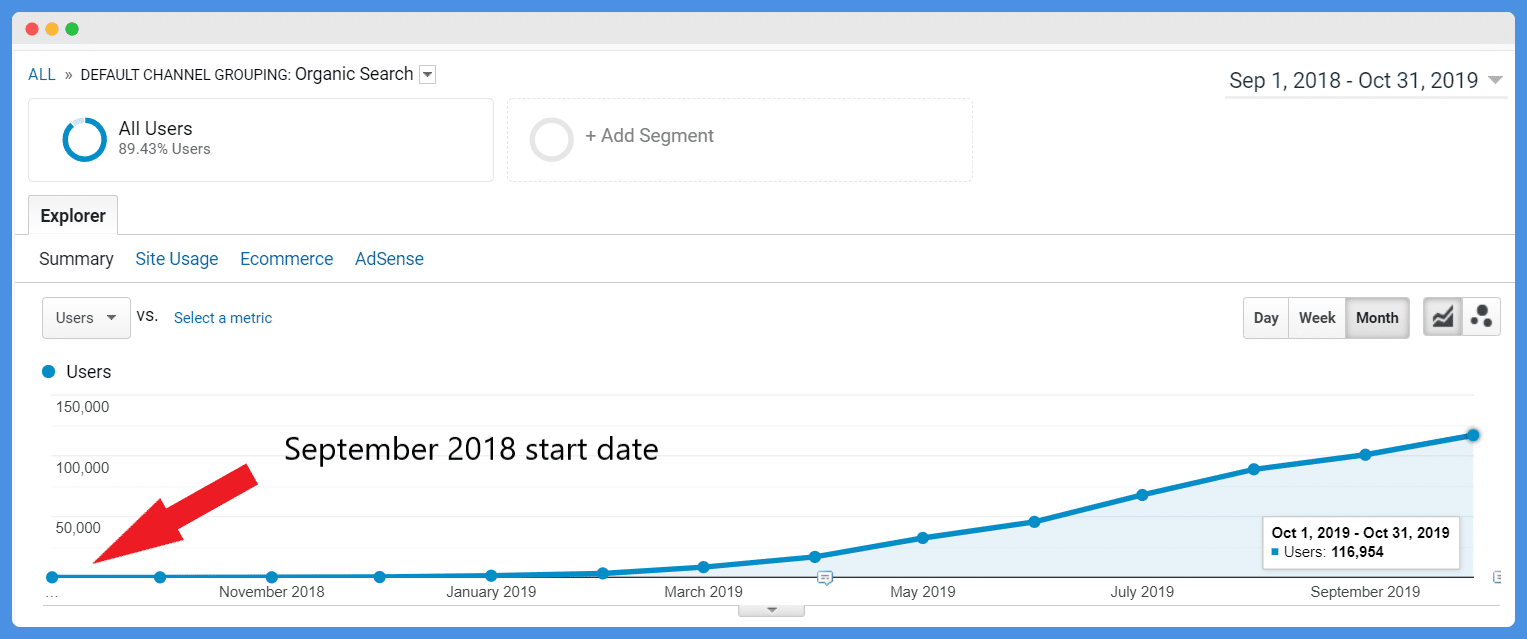
0 to 166,000 organics/month in 13 months for CampusReel.org

0 to 500,000 organics/month in 15 months for DoNotPay.com
It’s not just us either
Dan Sanchez runs Sweet Fish Media, a podcast agency for B2B brands.
He crushed organic without knowing SEO.
By focusing on content quality at scale.

Learn what these projects had in common and why it’s the #1 lever to get the fastest SEO results.
The Opportunity
The world is full of unique products that never get discovered.
DoNotPay helps a very specific set of people during a very specific timeframe.
- Just received a parking ticket and doesn’t want to pay it
- Wants to sue someone or sue a company in small claims court
- Needs to request a refund or chargeback
- Wants to cancel a hard to cancel membership or service
- Qualifies for compensation for missed or delayed flights
- Needs a virtual credit card
A yearly subscription for DoNotPay is $36 means reaching users at their time of need is critical.
The Strategy
In 2019 New York City collected 565 million dollars in parking fines.
When someone searches Google for “pay NYC parking ticket” it’s almost guaranteed that the searcher just received a parking ticket in New York City.
And in that exact moment
DoNotPay might be one of the most helpful websites on the internet.
DoNotPay’s Dispute Parking Tickets product lets users appeal parking tickets in any city in the USA and UK.
There are over 19,000 cities in the US alone.
Unfortunately, Google won’t let DoNotPay rank only one page on ‘Dispute Parking Tickets’ for 19,000 cities.
Every year consumers are taxed tens of billions of dollars of a year by morally corrupt business practices.
DoNotPay’s Cancel Subscriptions, Refunds, and Chargebacks products help consumers enforce their rights against 10,000+ of America’s most popular companies.
DoNotPay can’t rank only one page on Refunds or Chargebacks for the 10,000+ companies DoNotPay helps enforce consumer rights.
If DoNotPay wants to rank in Google for ‘Seattle parking tickets’, we need a page on disputing parking tickets in Seattle.
If DoNotPay wants to rank for ‘Boston parking tickets’, we need a page on disputing parking tickets in Boston.
If DoNotPay wants to rank for ‘cancel Planet Fitness’, we need a page on how the searcher can cancel Planet Fitness.
And on, and on, and on 10,000 times.
Why?
Because we can’t make a single page relevant to 19,000 cities or 10,000 companies.
When the searcher is looking for information, they’re not even looking for DoNotPay.
They’re looking for resources on how to do this on their own.
And because the user’s goal is to seek information, and not necessarily use DoNotPay
If we focused on DoNotPay at the expense of helping the user
Searchers wouldn’t get what they expect
And compared against other websites Google could show, visitors would have a higher bounce rate, lower time on site, and less pages visited.
And the content wouldn’t rank.
So our entire organic search strategy
Is based on simply being the most valuable resource Google could show a searcher when looking for a particular piece of information.
Learn how Google really works
Content Production is the Biggest Bottleneck to Big Outcomes
We’ve established that DoNotPay needs a page on disputing parking tickets in every city in the country.
And a page on each one of the 10,000 companies they support.
So, in order to be where DoNotPay’s audience is already searching today, right now
DoNotPay needs to create tens of thousands of pages of content.
And that means the biggest bottleneck in reaching our audience organically is the speed at which we publish content.
Let’s break it down.
If we need to create 10,000 pages to get in front of 10,000 opportunities
And we publish 100 pages a month
It will take us 100 months, or eight years, to be everywhere DoNotPay’s audience is already searching Google for today.
And it’s not just DoNotPay.
If you look at the websites generating the most organic traffic it’s always the websites with the most content.
Here is a breakdown of the ten largest players in the dogs/pet niche.

There are four columns:
- URL
- Estimated organic traffic (Ahrefs)
- Number of pages (Ahrefs)
- Traffic per page per month (#2 / #3
The most important column is E, traffic per page, per month.
When you look at this list, what you don’t see is
A website generating 80% of the traffic with 20% of the content.
What you do see.
Each of the top players in this space generate a very narrow band of 170 to 853 visitors per month per page.
And this observation has held true for every niche we’ve looked at.
[optin-monster slug=”uicbiomwkb9sfvz9idqo”]
Learn why we’re confident publishing velocity is the #1 lever to get the fastest seo results.
If Backlinks are so Important, Explain This to Me
You cannot convince me that the most sophisticated big data company in the world
The same company that owns Google Analytics, Chrome, and Android
Is using an easily gamed metric like backlinks as a primary ranking signal.

It’s just too unbelievable.
Yes, DoNotPay has an incredible backlink profile.
Their earned media has gotten them natural placements in BBC, CNN, CNBC, Vice, New York Times, Washington Post, PBS, Fox, Today Show, and more.
Some of these publications featured them multiple times.
And this does make our job easier.
But it’s not the primary factor behind the success of the campaign.
I know this because our team has created successful campaigns with a very average number of backlinks.
[optin-monster-inline slug=”dulvrcju4bcs6gp0bnh2″]
AnyLeads.com was a DR33
That didn’t stop us from going o to 47,000 organics/month.

CampusReel.org was a DR33
That didn’t stop us from taking the project from 0 to 166,000 organics/month in 12 months.

Doggypedia.org was a DR9
Doggypedia started as a fresh domain at DR0. That didn’t stop us from taking the project from 0 to 116,000 organics/month in 13 months.

Remember this chart?
Doggypedia generates just as much traffic per page, per month as the websites with the highest DR in the pet industry.

And because we’ve been able to crush organic search so consistently without backlinks
We never got around to learning how to build them.
And this is a really powerful approach to organic search.
Because it means instead of praying to the Google Gods for a great outcome.
The outcome is entirely within our control.
Learn 4 other tactics we use to rank without backlinks.
[optin-monster-inline slug=”vvos9dfvg2vmhhpdzaa5″]
Technical SEO is Overrated Too
Technical SEO sounds super scary.
It’s because of two reasons.
- The most authoritative people in SEO make it sound super scary.
- The person you’re taking advice from hasn’t achieved the outcome you want to achieve
Brain Dean’s 200 ranking factors have been shared 45,000+ times on Twitter.
This article has probably been read 500,000 times.

If there were really 200 factors that mattered
I would have given up a long time ago
Fortunately for all of us, our experience taking four projects from 0 to 100,000 organics/month indicates you can skip Banklinko’s article on ranking factors.

The second reason is because the SEO you’re taking advice from hasn’t achieved the outcome you want to achieve.
In 2019, Rand Fishkin, founder and former CEO of Moz ran an SEO survey,.
The results are shocking.
Most SEOs on the internet aren’t actually SEOs.

Here are the areas we spend time thinking about.
- Mobile speed & friendliness
- URL structure
- Internal linking structure
- Optimizing for user experience
- De-indexing thin content
- Diagnosing Google Search Console errors
[optin-monster-inline slug=”dulvrcju4bcs6gp0bnh2″]
Mobile Speed & Friendliness
Google switched to mobile-first indexing in 2020.
It doesn’t matter how fast your desktop pages are.
And it doesn’t matter if a majority of your traffic is on desktop.
Google says mobile page speed is what they measure.

Learn more here.
Here are two great resources to diagnose page speed issues:
- GT Metrix
- Google Pagespeed Insights
URL Structure
This is SEO 101, so we’re not going to spend much time here.
Do’s
- Set your page URLs as domain.com/main-keyword
- Host your content on the root domain (domain.com/blog)
Don’ts
- Don’t use random characters in your URL
- Don’t use categories in your URLs (domain.com/category/main-keyword)
- Don’t use /blog/ in your blog URL (domain.com/blog/main-keyword)
- Don’t host your content on subdomains (blog.domain.com)
Internal Linking Structure
Internal links tell Google how important any given page is to your business.
Every internal linking strategy is unique, but all internal linking strategies share these three things in common:
- The more internal links to a particular page, the easier that page is to rank.
- The further away any page is from the homepage (clicks), the harder it is to rank
- The more relevant the page the internal link is coming from, the more it helps the page that it’s linking to
Internal links basically do what people think backlinks do.
@contentdistributioncom Internal links do what you think backlinks do! I’ve found internal links to be instrumental in improving page rankings. Learn about the strategy behind using them, their role in Cluster AI, and the art of planning content with linking in mind. #SEOTactics #seo #contentcalendar #searchengineoptimization #contentdistribution
Sending dozens of internal links to high-value pages can significantly increase the rankings of the target page.
4 other tactics we use to rank without backlinks
Optimize for user experience
Google strongly leverages user engagement data to determine which pages add more value to a user than other pages.
Align everything you do with:
- Keeping the visitor on the site longer
- Increasing the number of pages the visitor views
- Decreasing your bounce rate
These three aspects are remarkably comprehensive and include a lot of the other tactics in this case study:
- Site speed and mobile-friendliness
- Internal links that visitors can’t resist opening
- High quality, relevant content that solves the visitor’s problem better than anyone else
- High converting CTAs
- Social proof from earned media & user reviews
De-indexing Thin Content
An important metric to pay attention to is the percentage of content on a site that Google might consider ‘thin content’.
Thin content is a broad term that can refer to:
- Pages that will never rank for non-branded searches
- Pages with low amounts of unique content
- Pages with low user engagement metrics
- Pages with a low volume of traffic across all channels
If a website has a higher percentage of thin content, it is hard to grow it organically.
But, if we cut out thin content, we’re giving strong pages a better chance to perform.
This practice is officially called content pruning, and even though it sounds daunting and can make content managers anxious, it is for the best.
Just like you have to cut an avocado plant for it to grow fruit, you have to cut the branches that are weighing good content down.
Want more proof? Learn how Quickbooks increased non-branded organic traffic by 44% after deleting 40% of their thin content.
Want to start content pruning your site?
Use Ahrefs’ content audit spreadsheet.
Diagnosing Search Console Issues
According to Google, there are at least 5.4 million pages about Google Search Console.

We don’t have anything to say about Google Search Console that hasn’t already been said.
Except —
If you’re resource constrained, don’t bottleneck yourself fixing technical issues before you scale up content production.
When you make a technical SEO change, it will impact your traffic in as little as days or weeks.
But it takes months to create a content creation and distribution infrastructure and begin ranking.
Get your content production on lock first.
[optin-monster slug=”dogokf2h8t3k6qnqevac”]
Keyword Research to Uncover Opportunities & Drive Relevance
If we had to do keyword research manually,
We would need an entire keyword research department.
We would have half a dozen people doing nothing but keyword research.
We would very easily spend $5,000 – $10,000+ a month evaluating, hiring, training, retaining, mentoring, coaching, and QAing our keyword research team’s deliverables.
We automated it.
Using data from Google.
We can plan a year’s worth of content in a matter of minutes.
If this sounds crazy, it’s because it is.
It’s 2021 and the entire industry is doing manual keyword research.
- Experienced SEO’s are delegating everything but keyword research because it’s too hard to get right
- Keyword research deliverables are inconsistent from person to person
- Inexperienced SEOs know how important keyword research is, but live with anxiety because of the long feedback cycle between investment into organic and organic results
ClusterAi, our keyword grouping tool, uses data from Google to determine which keywords can rank together.
How do you know if you can rank keyword A and keyword B with one page?
You analyze the number of pages that rank for both keywords.
If there are three or more individual pages that rank for both keywords, you can probably rank for both keywords with one page too.
If there are two or fewer individual pages that can rank for both keywords, you probably can’t rank for both keywords with one page. You should create two pages to rank for each keyword.
This process is not intuitive.
SEOs that are manually doing keyword research are constantly screwing this up.
Let’s look at two keywords:
LinkedIn Profile Examples & LinkedIn Headline Examples.
These sound like a subtopic of optimizing your LinkedIn profile to generate more business for an average person.
But if you Google each keyword
You’ll see that all of the pages are optimized for one keyword or the other.
Never both.
There isn’t a single page ranking for both LinkedIn headline examples and Linkedin summary examples.
This means if you tried to rank for both keywords with one page, you wouldn’t rank either.
And the people that do manual keyword research are guessing.
They’re just guessing!
Again, and again and again.
From the gut.
So here is how ClusterAi works.
ClusterAi levels the playing field
Because the keyword research process is algorithmically driven.
The keyword researcher’s only job is to find all of the keywords that are being searched by qualified traffic anywhere in the funnel.
ClusterAi transforms keyword research from a time consuming, tedious guessing process
To a vocabulary exercise.
Let’s walk through the process.
ClusterAi simplifies how you do keyword research, no SEO skills needed
DoNotPay has a feature that help reduce the friction of communicating between prisoners and their friends and family members.
- Write a message, or snap a photo of a handwritten message
- Upload a few pictures (e.g. selfies, family photos)
- DoNotPay will print out and mail your photos and letter to your friend or family member in prison
We want to understand all of the ways people are making searches about communicating with state and federal prisoners.
Using Ahrefs, we go as broad as possible: prisoner, prisoners, inmate, inmates
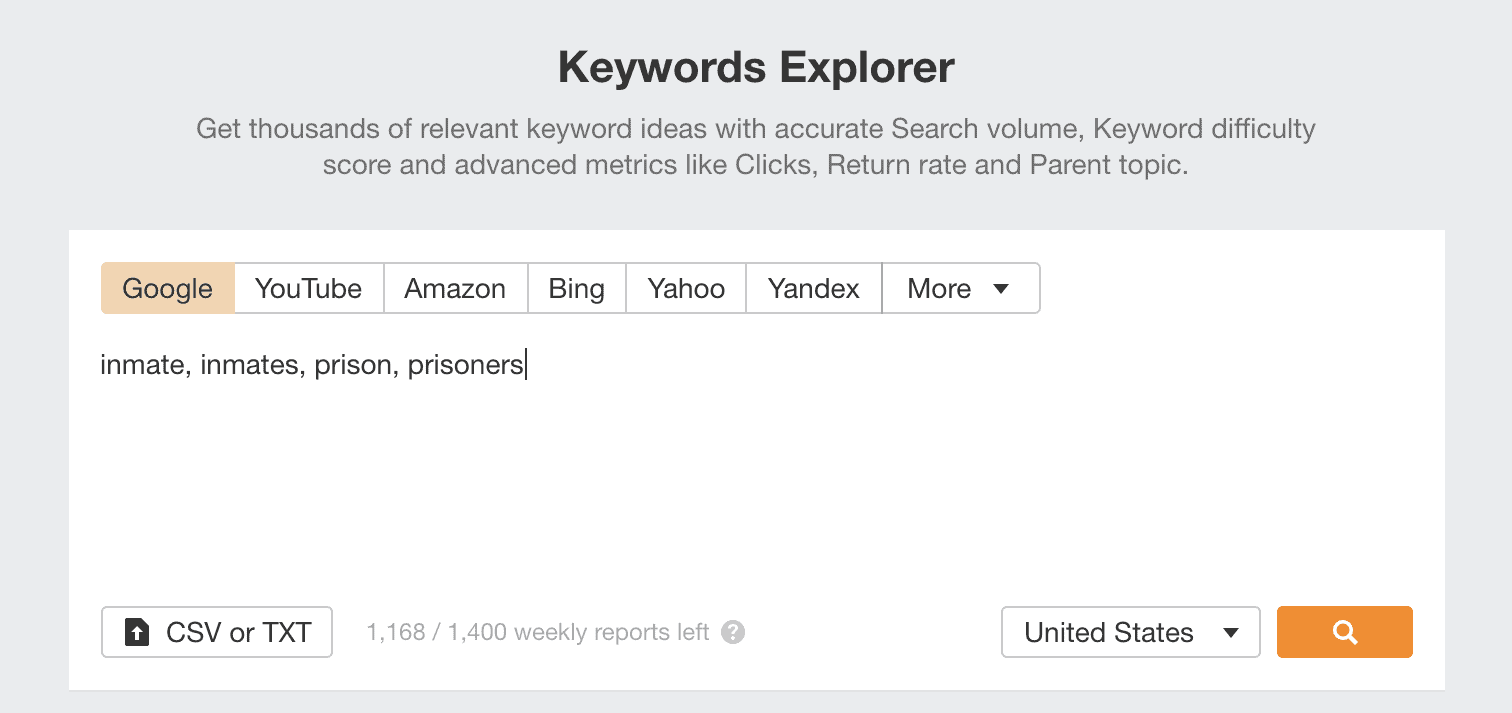
Then we use Ahref’s Having Same Terms feature.
This tells us there are 1,830,320 different ways that people are using inmate, inmates, prisoner, prisoners in their searches.
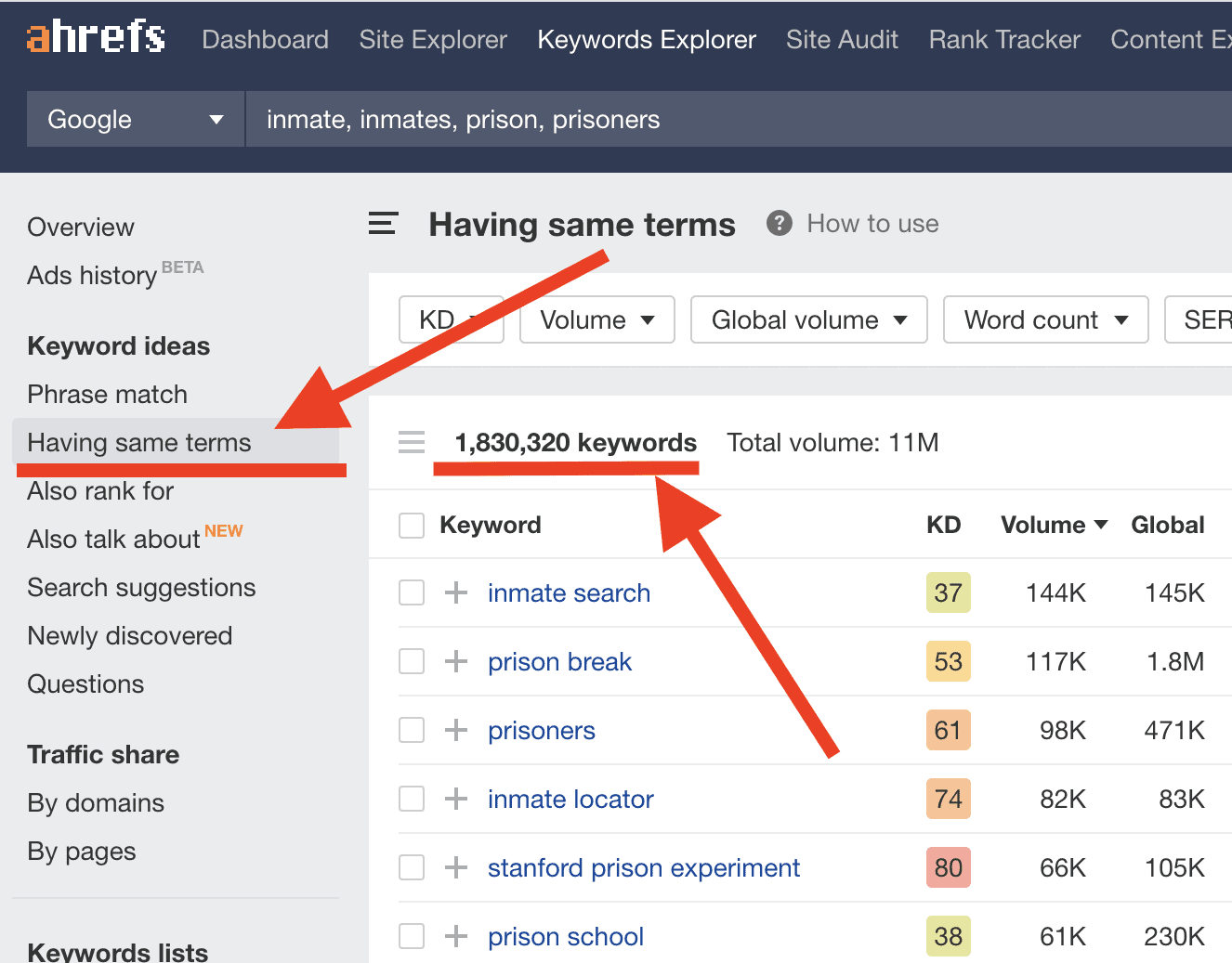
Most of these 1.8 million keywords do not indicate the searcher is looking for information on communicating with prisoners.
We’re going to include Ahref’s Include Keyword feature to filter out every EXCEPT
Keywords that contain our main keywords: inmate, inmates, prisoner, prisoners
AND our include keywords.
This is where the strong vocabulary comes into play.
Think of every word someone might use when looking for information on communicating with prisoners.
Here is the list we came up with
letter, letters, communicate, communication, communicating, pen, pal, pals, penpal, penpals, call, text, texting, send, sending, give, giving, video, videos, skype, zoom, call, chat, chatting, talk, talking, mail, email, emailing, mailing, envelope, envelopes, package, packages

This narrows our list down from 1,800,000 to 37,000 keywords.
That’s it.
Our work here is done.
We export our list.
We import our list of keywords into ClusterAi.
We take a nap.
And we wake up to a year’s worth of keyword research.
All without knowing how to do SEO.
Cool.
Get the step-by-step walkthrough on automating your B2B SaaS keyword research and affiliate keyword research with ClusterAi or check out ClusterAi now.
Optimizing Content
ClusterAi abstracts SEO skills from keyword research
ClusterAi also abstracts SEO skills from optimizing content.
We use a simple formula to turn ClusterAi’s keyword groupings into a framework non-SEOs can use to optimize their content.
All of the optimizations, none of the experience required.
Here is a summary of our framework:
- The URL of the page is always the exact match main keyword
- The meta title should contain the main keyword
- The meta description should contain 1-2 variations of the main keyword
- The H1 should contain the main keyword
- The H2s and content should contain variations of the main keyword
This simplifies our hiring and training processes.
And is probably our biggest contributor to being able to ‘do SEO’ without knowing SEO.
Setting Our Writers Up For Success
After using ClusterAi to discover and group every keyword variation our target audience is searching,
Our editing team works to set our writers up for success.
The more work our editing team does upfront, the better outcome we’ll get from our writing team.
For each content series, we create Content Series Templates (CST).
A standard CST includes:
- Go-to informational resources to familiarize the writers with the broader topic
- 3rd party example articles that set a content quality bar we need to beat
- Our competitors in the vertical
- Which sites to collect data from and source
- Who the audience is and the pain point they feel when they search
- How DoNotPay can help the searcher
- What DoNotPay can’t do
- Mandatory H2 headings that will appear in most articles
- Mandatory internal links
- Optional H2s with a decision-making and research framework for the writer
Creating a Content Series Template is a lot of work.
But you know what’s more work?
Editing hundreds of pages of content from dozens of writers.
Do as much work upfront to minimize more intensive editing work later on.
Scaling Content Production

Our 25-person team is publishing a similar amount of content as media giants like Techcrunch, WireCutter, New York Times, Washington Post, etc.
Here is what made that possible:
- Building our Content Management System in Airtable
- A documentation-oriented culture that has produced 350+ knowledge base articles
- A streamlined recruitment funnel that has allowed us to evaluate 1,027 writers, immediately reject 595, test 352, interview 106, ban 9 for life, hire 63 and retain 25
- An editing team that is passionate about great content and won’t let quality slip for any reason
- Strong product/market fit
[optin-monster-inline slug=”de1wsosiizxq9ehmgwru”]
Building our Content Management System in Airtable
I’ve previously used BaseCamp, Trello, SmartSheet, TeamWork, and Google Sheets for Project Management.
Airtable is better than all of them.
The best way to describe Airtable is
Other PM tools require you to change your workflow to fit theirs,
Airtable fits your workflow like a glove.
Airtable is our centralized hub where work gets done, and powers a majority of our primary systems:
- Content production
- Project management
- Recruitment
- Team member management
- Managing 3rd party services

Think Google Sheets on steroids.
- You can sort, group, view, and color code data without any coding.
- You can link records together
- You can build automations on top of it
Each Google docs includes:
- The main keyword (from ClusterAi)
- Variations of the primary keyword to include in the content and H2s (from ClusterAi)
- Link to the project brief
- Link to our writing requirements
- A form that indicates they have met our technical writing requirements
This process enables us to take any writer and turn them into an SEO content writer able to create the highest quality, most valuable content Google could show for any given keyword we’re targeting.

[optin-monster-inline slug=”g2tkcapcqij5ucwxuec9″]
Content Management
Airtable enables anyone, anywhere, on any device
To view the current status of every page of content we’ve ever published.

We have 15+ discrete stages in the content production pipeline.
As writers and editors change the status, the article re-organizes itself under the new status.
Each article has 15+ pieces of additional information we need to go live:
- Author
- Editor
- Project
- Status
- First draft due date
- Main keyword
- Keyword variations
- URL
- Featured Image
- Tags & categories
- Meta title
- Meta description
- Page title
- Last updated
- Featured image
- etc.
Project Management

Everything that isn’t content writing happens in our Activity Tracker.
This view is set up to track activities by status:
- Idea
- Not Started
- In Progress
- Ready for QA
- Done
As an activity changes status, Airtable moves it from group to group.
On the left side of the screenshot, we set up multiple views to quickly hop between action items for:
- Different team members
- Different types of activities
- Activities due today / this week / this month
Recruitment Funnel
We hire writers because they’re good writers.
Not because they’re ‘good at SEO’.
In fact, when writers say ‘they know SEO’
This is what they mean:

We can turn any good writer into an SEO content writer, creating content that naturally ranks.
What we can’t teach is:
- A strong baseline writing skill
- Passion for good content
- Drive to learn
- Consistency
What’s our secret?
Quantity.
That’s literally it.
Quantity.
The more candidates we can source, evaluate, test, and interview, the more likely we are to find a writer that is an excellent long-term fit.
@contentdistributioncom Say goodbye to half-baked writer test submissions! Dive into the key ingredients of a test that ensures completion AND helps you identify the cream of the crop. 🌟 #contentwriting #writertest #hiringhacks #hiringtips
How did we scale our recruitment funnel to evaluate over 1,000 candidates, test almost 600, and interview around 100?
With Workello.
Workello is a hiring automation platform that helps content teams evaluate, assess, and hire better, more affordable writers with 95% less clicking.
[optin-monster-inline slug=”recykg9m0cnc69kwnsfn”]
Building Our Content Team

Here’s the deal.
Just like the #1 lever for faster SEO results is publishing more content.
The #1 lever for hiring better writers is evaluating and testing more writing candidates.
That’s it.
The more writers you evaluate and test, the more likely you are to find the right mix of quality, affordability and capacity.
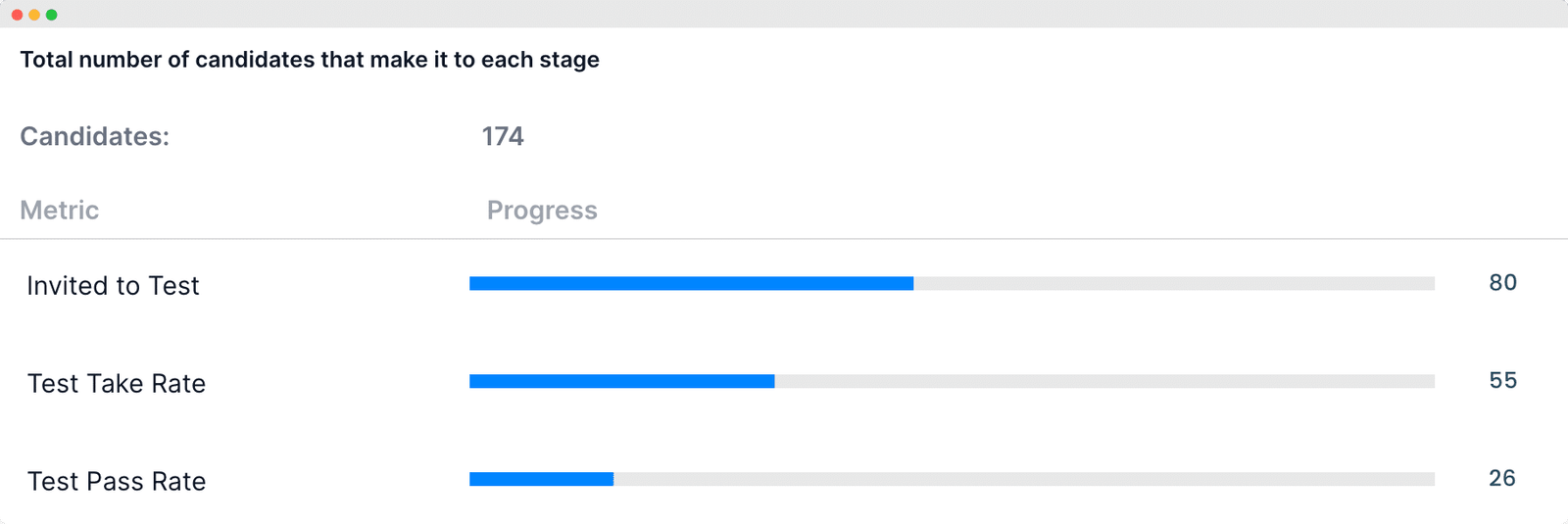
Check out the metrics on this hiring cycle:
- 174 candidates
- 80 invited to take our pre-hire writing test
- 55 submitted a completed test
- 26 writers passed the test
We use Workello to filter through hundreds of candidates to identify and hire the top 1% in just a few minutes.
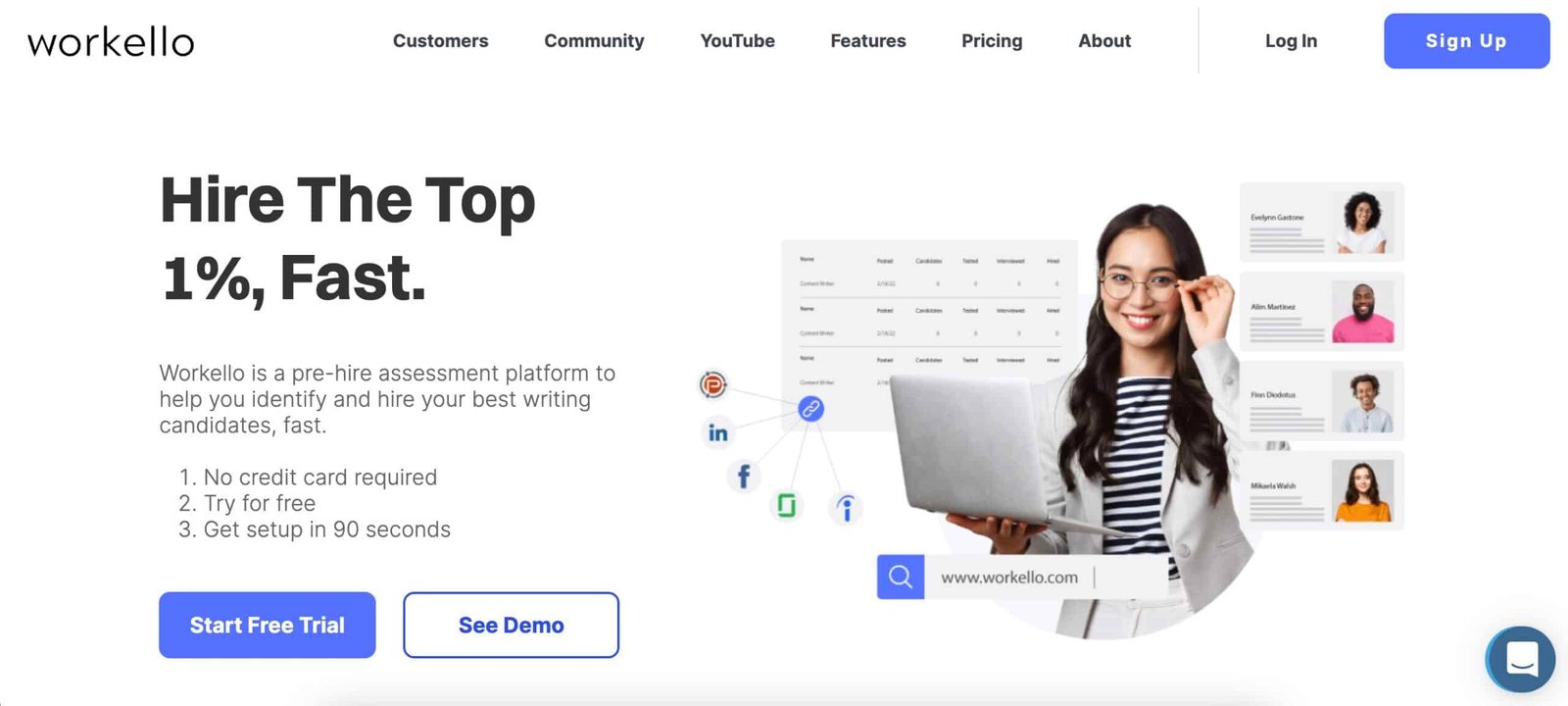
Here’s how it works.
- Post your job ad on Reddit, LinkedIn, Facebook, ProBlogger, etc
- Watch candidates stream into your hiring dashboard
- Send pre-hire writing tests to your best candidates
- Sitback, relax and wait for candidates to take your test
- Hire the top 1%
Everything in Workello is pre-written and pre-optimized so you can start accepting writers into your hiring funnel in 90 seconds.
Here are some hiring guides to get you up and running ASAP:
- Get 200+ writers in the next 72 hours
- Hiring writers for hard content (Dev Ops, SaaS, legal, martech, etc)
- Outsource job posts to a VA
- Why writer marketplaces are broken
Scaling Quality Through Documentation & Passion
We’ve grown from 1 to 25 full-time team members between January 1st and December 31st, 2020.
When we tell people this,
Inevitably, one of the first questions they ask is:
“How do you maintain content quality?”
Or, “a team in Eastern Europe can’t possibly write X type of content.”
After talking to, and watching many founders of fast growing services companies
It’s incredibly difficult to maintain the quality that drove the growth spurt while the growth is happening.
There are a few reasons:
- The founder is no longer closer to the work, and is relying on a team without the founder’s unique skills or experiences
- Systems and processes to handle the increased workload grow slower than the rate of new work and team members are added
- The easiest thing, and oftentimes the only thing that the team can do to deal with the growing pain and aggressive business goals is to let things slide.
Here is how we dealt with each issue.
Documentation, Documentation, Documentation
When I started ContentDistribution.com 18 months ago
I knew that I wouldn’t be able to achieve my goals for the company alone.
I spent the first 6 months building documentation to enable team members without my unique skill sets and experiences to create outcomes as good, or better than I could create on my own.
The first step was thought leadership to indoctrinate my team into my framework for understanding Google.
At the same time I began creating detailed processes on how work should be done.
Our knowledge base started off in Google Docs.
And that worked for about a year.
But as our library of processes has grown
Discovery became a major pain point.
We couldn’t find the documents we had already written.
After evaluating Notion and Slite, we landed on Slite.
Today we have over 350+ process documents.
@contentdistributioncom Want to remove the guesswork from your SEO agency’s processes? SOPs are the answer! Documentation can drastically improve your team’s output. #SOPs #AgencyLife #ProductivityHacks #AgencyGrowth #seo #contentops #seoagency #contentagency
At this point the level of detail and sophistication is 10x more than I could have created on my own as the sole knowledge base contributor.
These documents cover nearly every aspect of every role, and every activity performed within the organization.
- Job description and expectations
- How to prioritize workload on a daily, weekly and monthly basis
- How to use our internal systems and processes
- How to do the work
- How collaboration happens between team members and stakeholders
- Expectations on visibility and reporting
Want more content on internal systems and processes for remote teams?
We’re publishing everything. Here is what we’re working on now:
- Automating PTO tracking for 25+ full time team members in 5+ countries
- Managing, provisioning and de-provisioning systems for 65+ 3rd party services our team uses
- How to scale your hiring funnel to 1,000+ candidates
Join our new Facebook Community on building stronger remote teams to get these playbooks as soon as they’re public.
Building a Culture of Documentation
It’s not enough to create documentation yourself.
To meet ambitious goals you need to build a culture of documentation.
I wrote the first 50 knowledge base articles
My team wrote the last 300.

Building a culture of documentation starts from the top.
I’ve never worked in a company with documentation, neither has anyone else on the team.
If you are a founder, there is no-one else that is going to build your documentation oriented culture if you don’t do it.
I get it.
You’re busy, you’re really good at what you do, and you don’t have the time right now.
Major growth mode.
But I can promise you if you don’t do it, you won’t be as successful as you hoped.
If you’re not convinced yet, here are more things to consider:
- How do you hold someone accountable to something that isn’t written down?
- How do you change a process that isn’t written down?
- How much extra work, friction, and anxiety is created when someone is blocked or responsible for unblocking someone due to lack of information?
- How much energy are you willing to invest telling people the same thing over and over?
Alright, you’re convinced. Here is how you’re going to get started.
Create a list of all the things that you do on a daily, weekly, and monthly basis
Build your knowledge base skills by documenting the easiest things first
After you’ve written the first 25 – 50 knowledge base articles go back through them and update them with the best practices you learned along the way.
Next, create a KB on how to create KBs.
And make all of this information as easy to find as possible.
Ask your team to bookmark it.
But creating documentation oriented culture is definitely not a one-time thing.
“When you’re tired of saying it, people are starting to hear it.” – Jeff Weiner
If someone asks a question covered in a KB, link them to the KB instead of answering the question directly.
If someone asks a question that is not answered by a KB, update the KB and link it to the person asking.
And only after you’ve built the expectations, the standards, and the framework for documentation can you hold your team accountable for embracing a culture of documentation.
We’re making our KB on how to build KBs public. Get it when it goes live by joining our facebook community for building more productive, happier remote teams.
Find People Passionate About Great Content
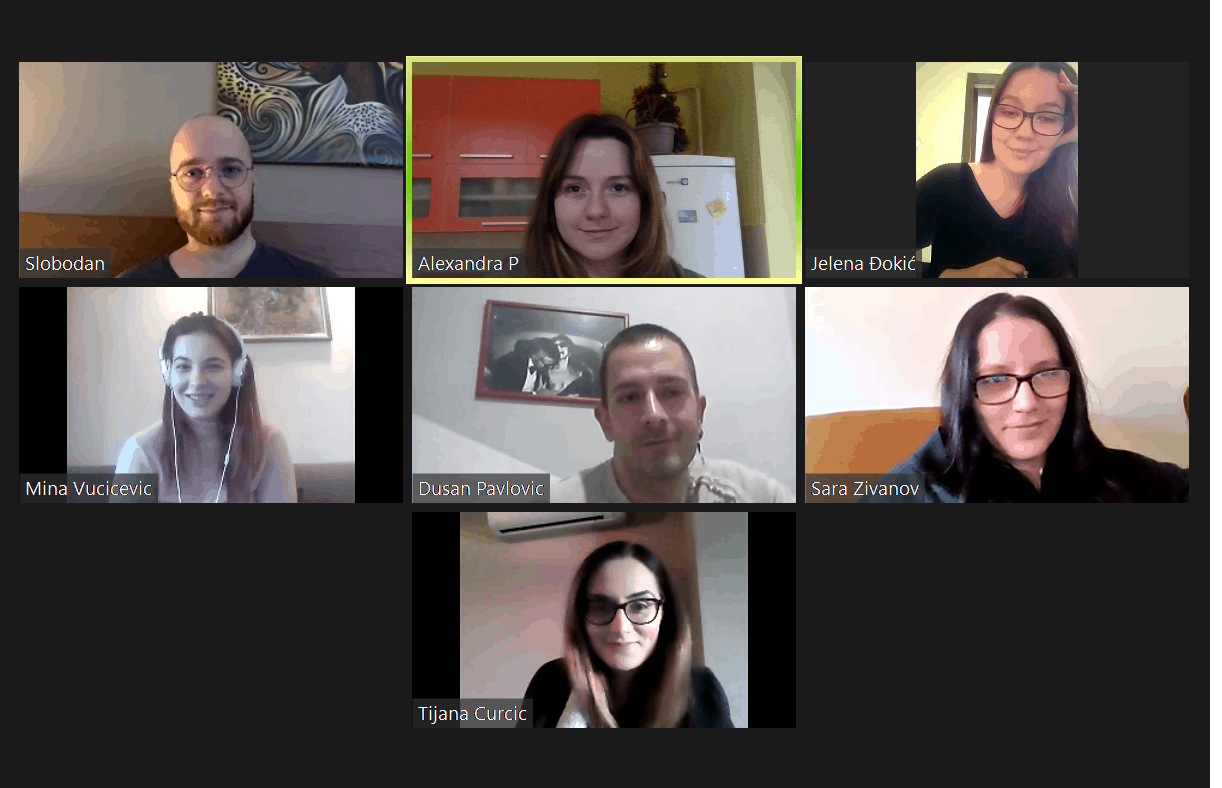
One of the best tools your team will have available to manage an unmanageable workload is letting things slide.
It’s easier for everyone involved when editors and our QA team lets sub standard content go live.
But our editors are passionate, probably even elitist, about good content.
Even if it’s more work.

Want to find passionate editors? Here is a demographic of our team:
- All of our editors joined the company as writers and were promoted for high performance
- All of our editors have been consuming and speaking English since childhood
- Most have completed, or are enrolled in a masters degree of English Literature
- Most of our editors haven’t worked in content writing before joining our team as writers
- Many have previously worked as English teachers
#1 is crucial.
The more writers you can evaluate, test, hire, train, and retain, the bigger pool of candidates you can recruit your editors from.
It takes us approximately 3-6 months to train a high performing writer into a self sufficient editor.
In the past our external editing candidates we hired were good editors that just didn’t care as much as we do.
If you don’t already have an editing team that cares, the #1 way to find them is to work with more writers.
Get the hiring funnel we used to evaluate 1,000+ content writing candidates in 2020.
🥇 Your Turn
Fully Managed SEO
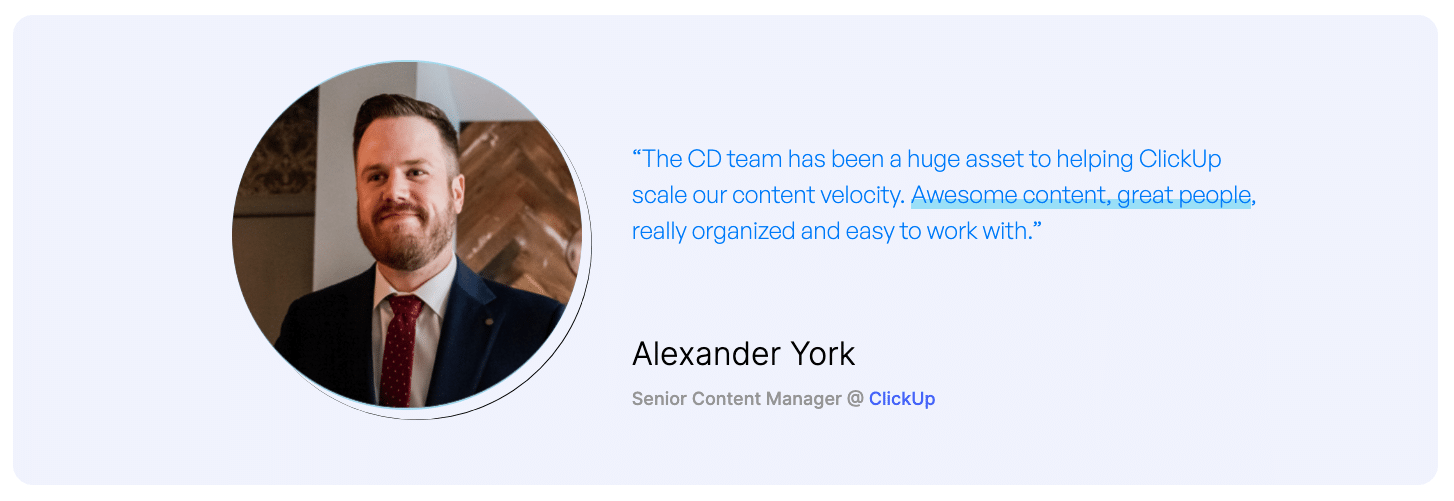
Fully managed SEO for category leaders and future category leaders with huge goals and the budget to execute. We’ll do the heavy lifting, you sit back and take the credit.
👉 Learn what it’s like working with our consulting team.
Content Ops Consulting

For startups that would prefer to develop institutional knowledge and scale up in-house,
👉 Join the 100k Organics/Month Club.
Free Resources
👉 Read all of our free playbooks
👉 Join 13,197 marketers getting our best content in their inbox 1x/week
👉 Hang with 10,548 marketers in the #1 Content Ops Community
👉 Subscribe to our YouTube channel for hour long deep dives.
Software
👉 Hire the top 1% of writers, editors, SEOs, VAs, designers and more.
👉 Build a topical map on EZ mode.



